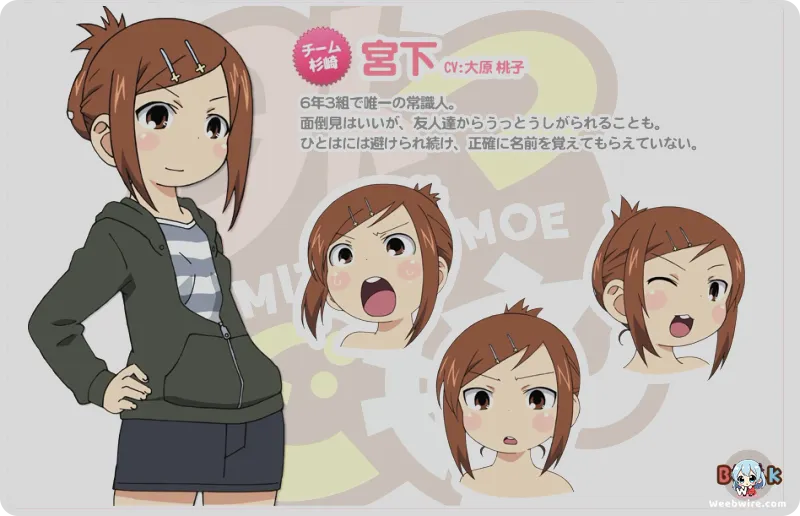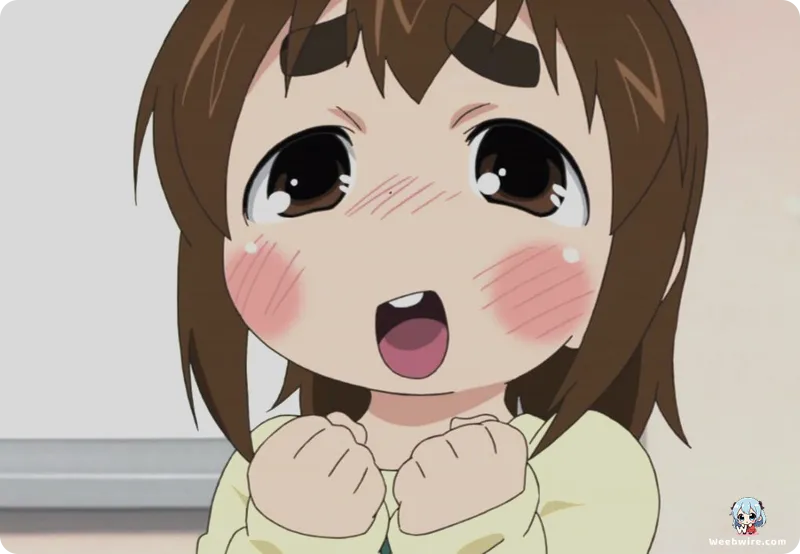The Marui Triplets Decoded: Unpacking the Hidden Numerical Secrets and Subversive Comedy That Define Mitsudomoe

The Subversive Comedy of *Mitsudomoe*
The 2010 anime adaptation of Yasu’s manga, Mitsudomoe, holds a unique position within the realm of slice-of-life comedy. While its premise suggests a typical lighthearted series centered on the daily antics of grade schoolers, the show quickly established itself as a brilliant exercise in subversive, fast-paced gag humor. It frequently challenged conventional norms and audience expectations, cementing its lasting status as a cult favorite among enthusiasts.
The Numerical Foundation of the Marui Triplets
One of the most essential, yet often overlooked, foundations of the series lies in the nomenclature of its core cast. The central figures are the Marui triplets: Mitsuba, Futaba, and Hitoha. Their names are not arbitrary; they are meticulously built upon numerical prefixes. 'Mitsu' (三, meaning three), 'Futa' (二, meaning two), and 'Hito' (一, meaning one). This linguistic structure precisely mirrors their birth order and, more importantly, defines their dominant personality archetypes within the chaotic family unit and the classroom.
Mitsuba, the eldest, embodies the demanding 'three' or leader, often instigating the show’s conflicts. Futaba, the middle sister, represents the powerful, energetic 'two,' known for her almost superhuman physical strength and athletic pursuits. Finally, Hitoha, the youngest, is the quiet, detached 'one,' reserved and observant. This subtle, foundational naming system provides immediate insight into the dynamics of the three distinct siblings, highlighting creator Yasu's meticulous attention to detail even within an outwardly absurd comedy.

Context and Edge: Serialization in *Shōnen Champion*
The original context of the source material further explains the anime's unusually blunt and aggressive comedic edge. Mitsudomoe found its home in Akita Shoten’s Weekly Shōnen Champion, a magazine typically reserved for action, sports, and battle shōnen titles. This publication environment provided a striking contrast to the typical 'cute girls doing cute things' atmosphere suggested by the premise.
This serialization choice likely fueled the manga’s freedom to employ edgier, less conventional jokes compared to works housed in traditional shōjo or seinen comedy periodicals. The result is a series unafraid to deploy dark, occasionally crude, and distinctly non-P.C. humor, often delivered stone-faced by characters who are still in elementary school. This deliberate friction between visual aesthetic and mature content is a cornerstone of the show’s appeal.
Hitoha Marui: The Silent Source of Darkness
Delving into the character of Hitoha Marui reveals one of the series' most inspired comedic devices. Unlike Mitsuba, the resident sadist, or Futaba, the muscle-bound food enthusiast, Hitoha presents as a silent, introverted bookworm. Her comedy derives from the terrifying gulf between her innocent facade and her inner life. Hitoha is obsessed with dark, mature fiction and secretly fills her notebooks with disturbing, violent, or bizarre sketches.
This internal darkness provides routine comedic material, particularly when their teacher, Mr. Satou, inadvertently discovers her artwork, leading him to fear her quiet intensity far more than her sisters' overt disruptions. This trait allows the show to inject moments of genuine surrealism and unexpected horror into an otherwise mundane setting, positioning Hitoha as the silent source of the show's darkness.
Animation Technique: Mastering the Gag Payoff
Translating Yasu's panel-based, lightning-fast gags into smooth animation presented a significant hurdle for Studio Bridge, working with production support from Aniplex. The key directorial solution involved the masterful application of extreme, instantaneous facial exaggerations, often referred to as ‘chibi-gai’ or ‘deformation’ in animation, deployed precisely at the joke’s climax.
This technique was vital for maximizing the comedic payoff of the quick jokes, allowing visual shock to replace drawn-out narrative build-ups. The animators perfected the art of visual whiplash, rapidly shifting the detailed character models into grotesque, screaming caricatures within a single frame. This visual signature became synonymous with the Mitsudomoe anime’s successful gag adaptation.
The Hapless Adults: Mr. Satou's Misery
The supporting ensemble further enriches the comedic ecosystem. Mr. Satou, the perpetually unfortunate homeroom teacher, is a prime example. His narrative arc is defined by innocent interactions that are constantly misinterpreted, leading colleagues and parents to wrongly label him as a pervert. His hopeless crush on the school nurse, Ms. Sugisaki, compounds his misery.
This deliberate narrative choice—making the adults the hapless victims of the children's chaos—distinguishes Mitsudomoe from typical school comedies where teachers maintain authority. Here, they are merely comedic punching bags for the anarchy unleashed by the Marui triplets and their peers. This dense fabric of absurdity, woven with subtle narrative threads like the numerical names and its unconventional publishing history, ensures Mitsudomoe remains a profoundly engaging and enduring entry in the comedy anime canon.
Credits
Mitsudomoe
Author
Yasu
Cover Art
Yasu
Studio
Bridge
Publisher
Akita Shoten
Producers





